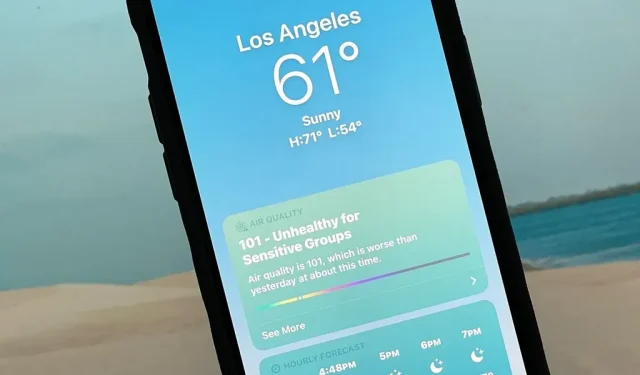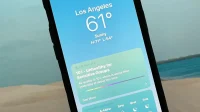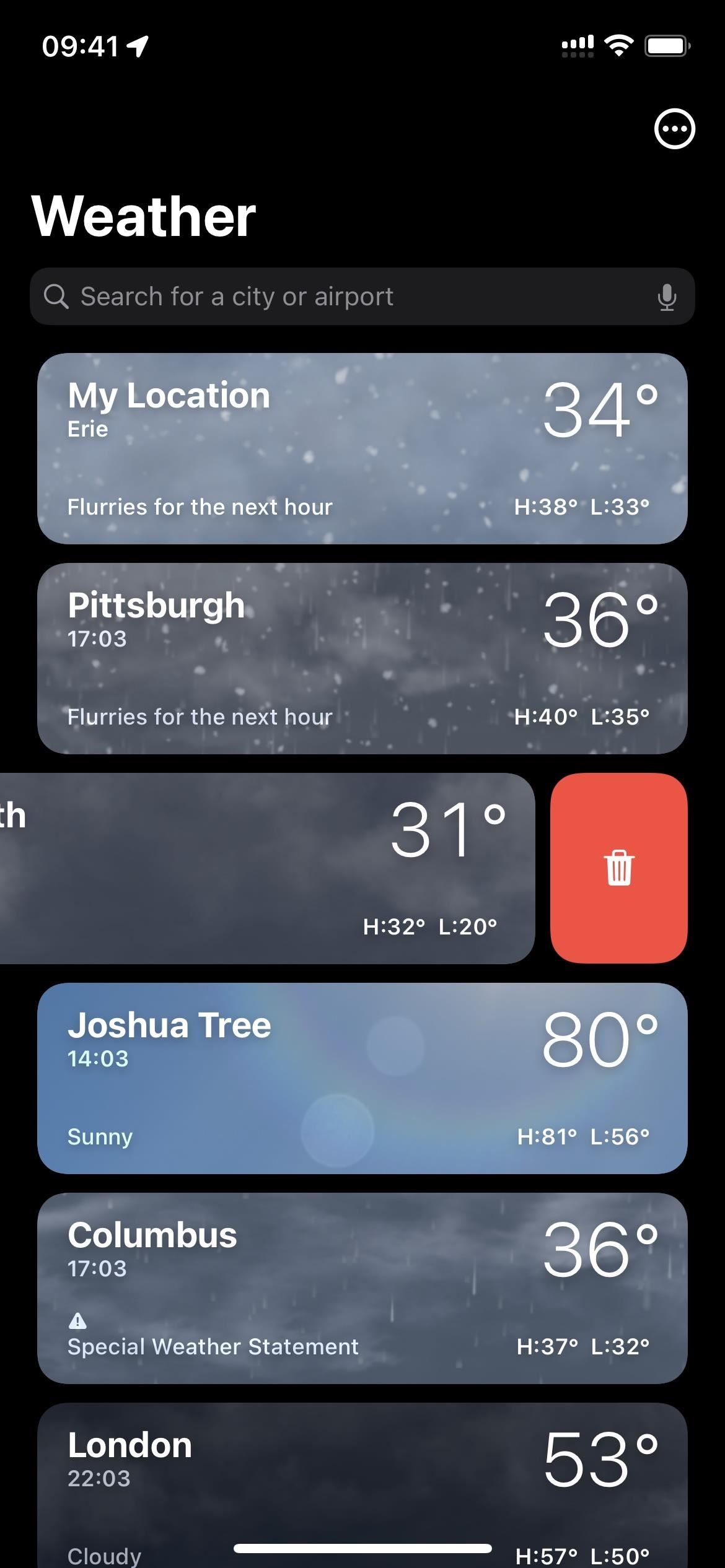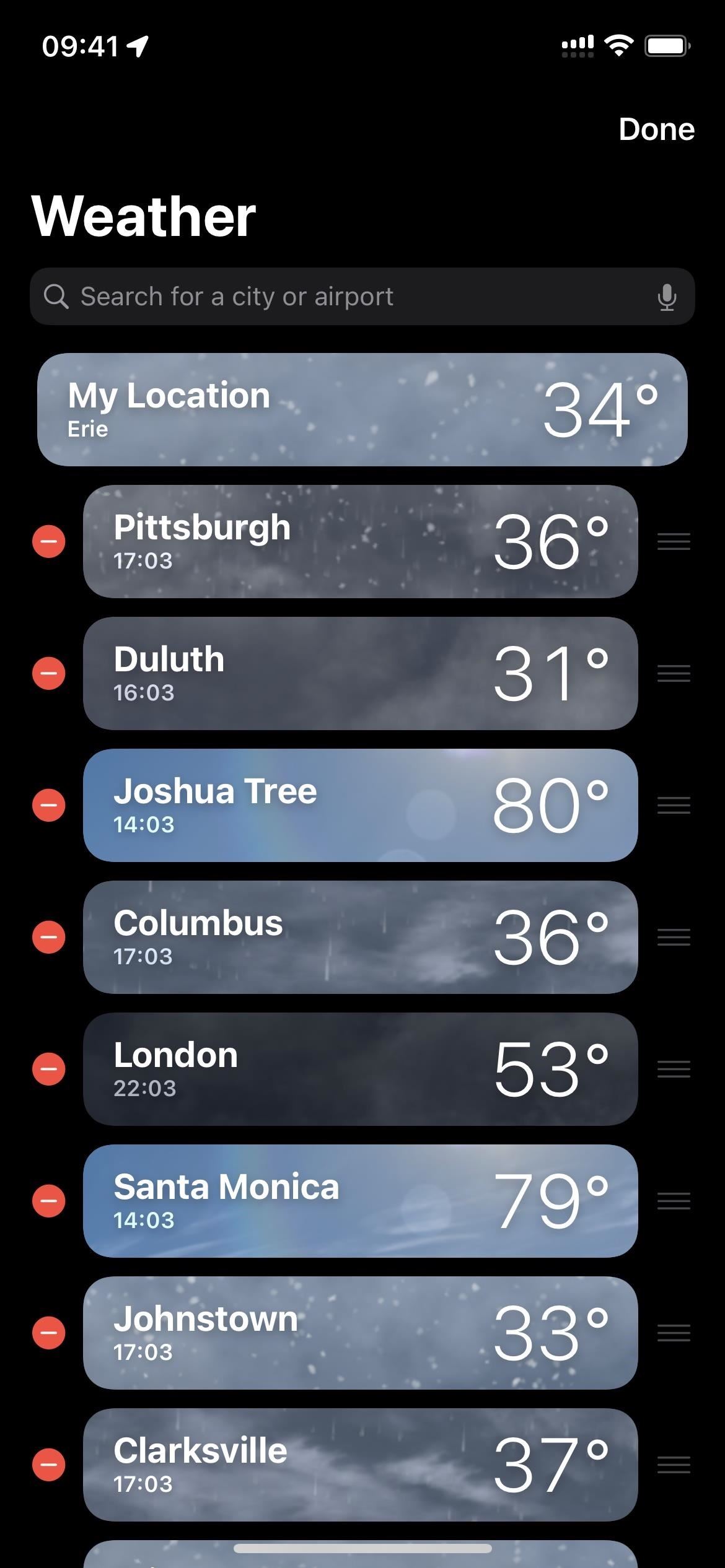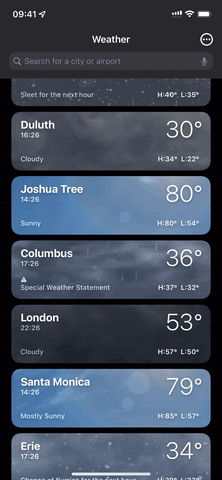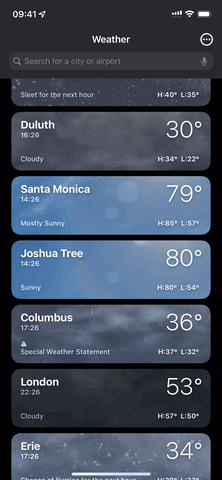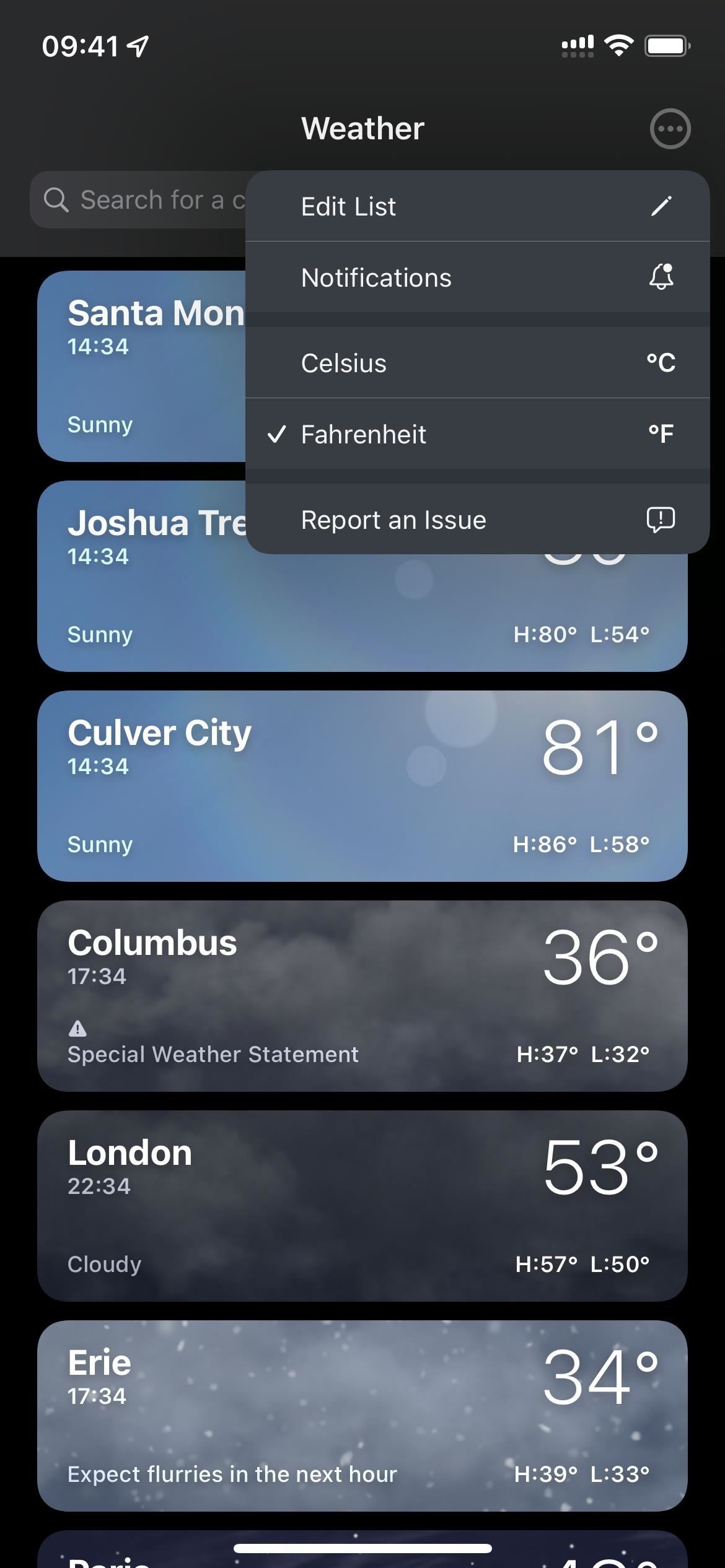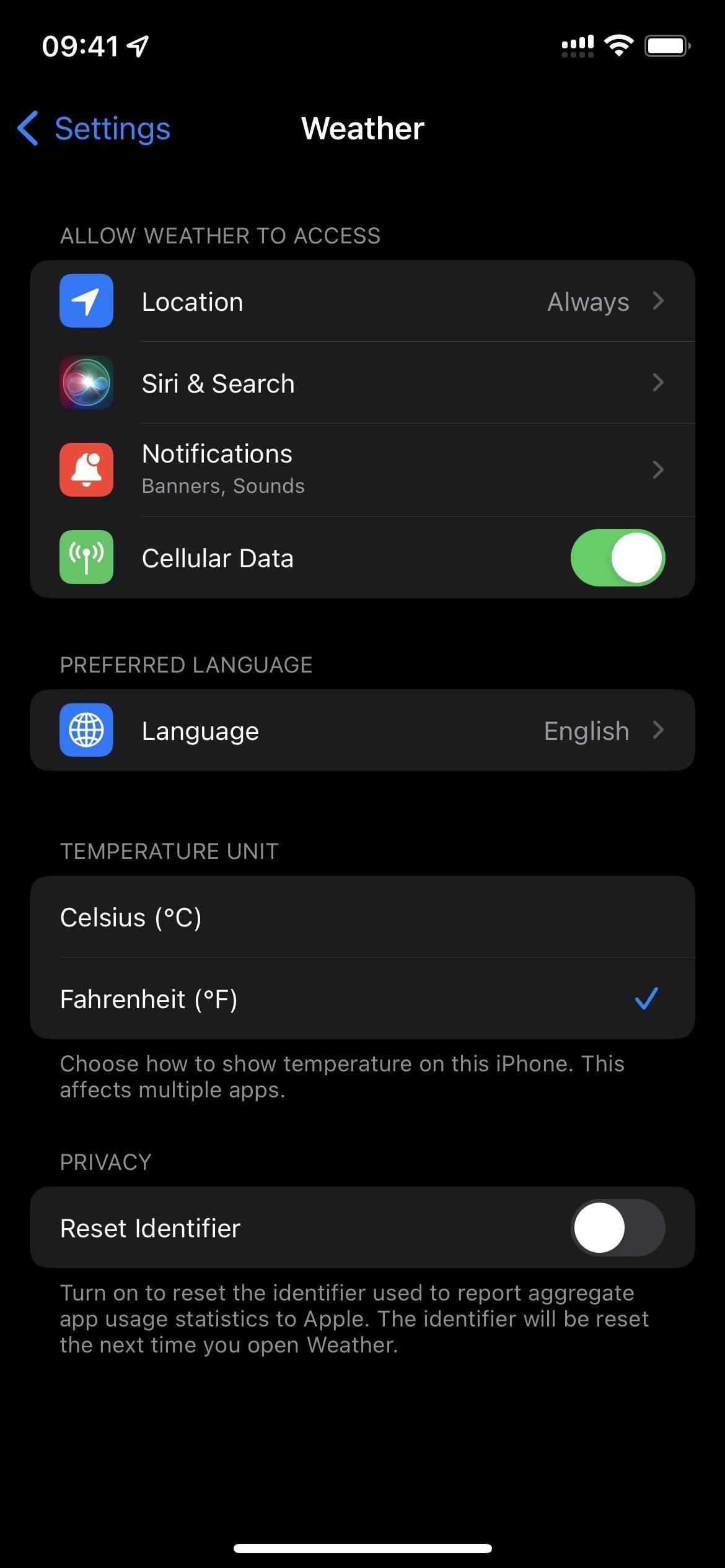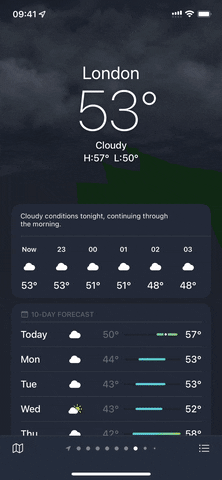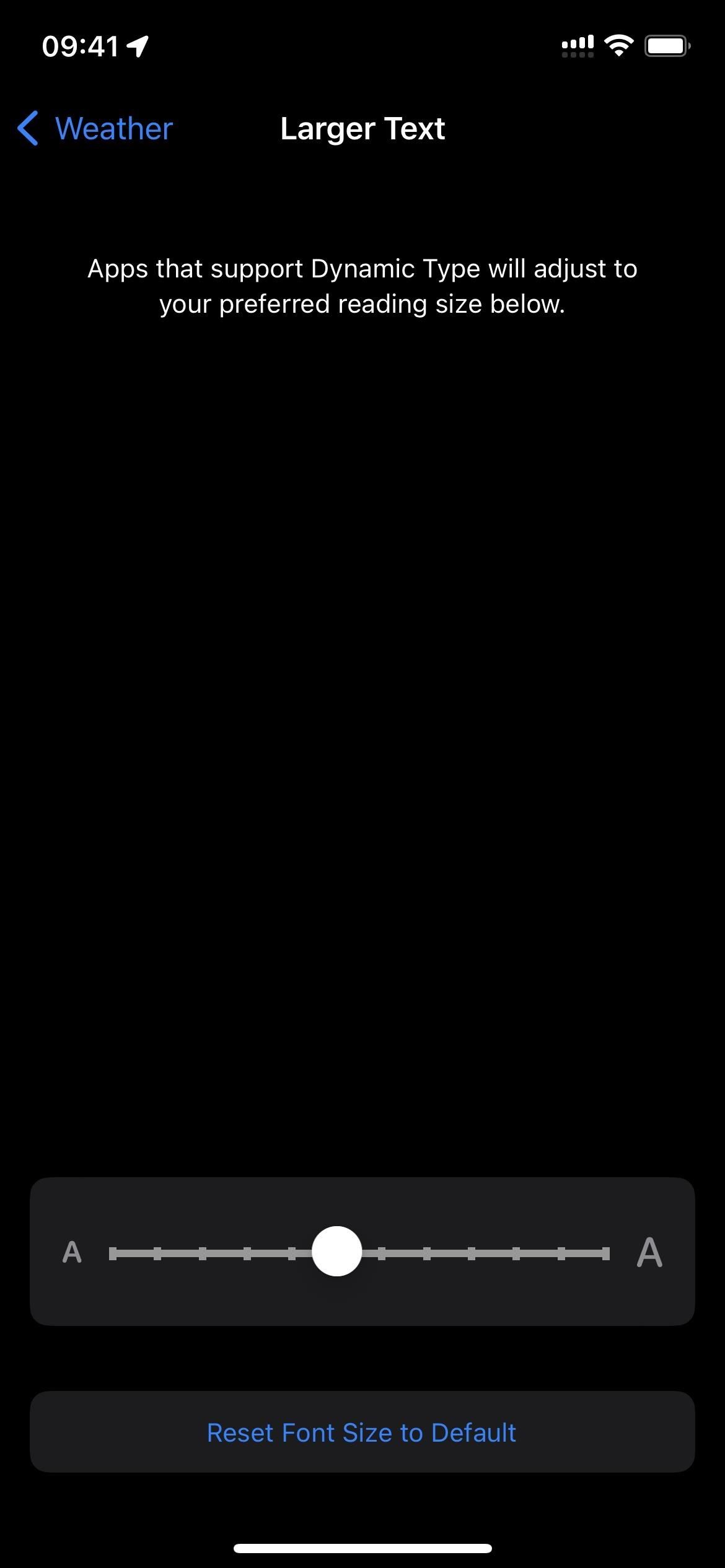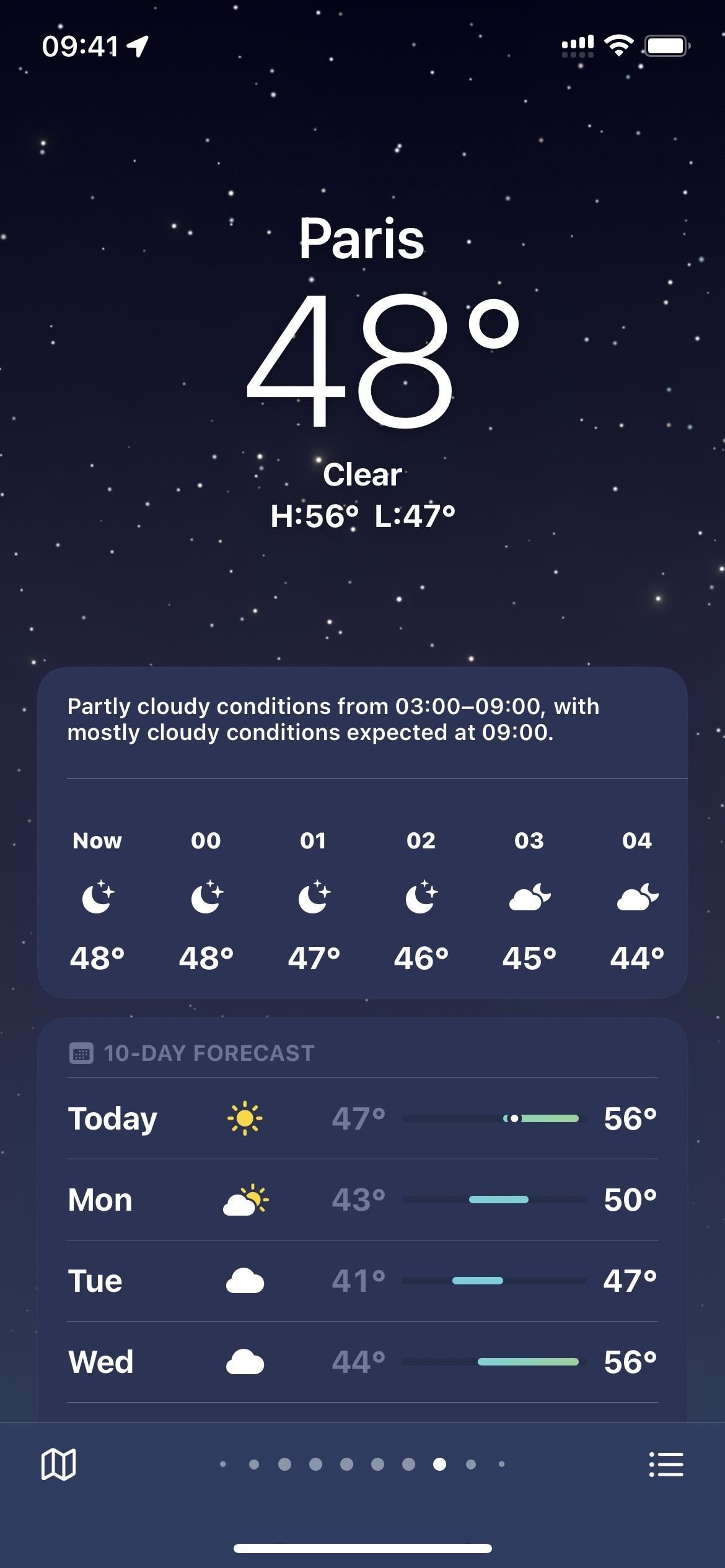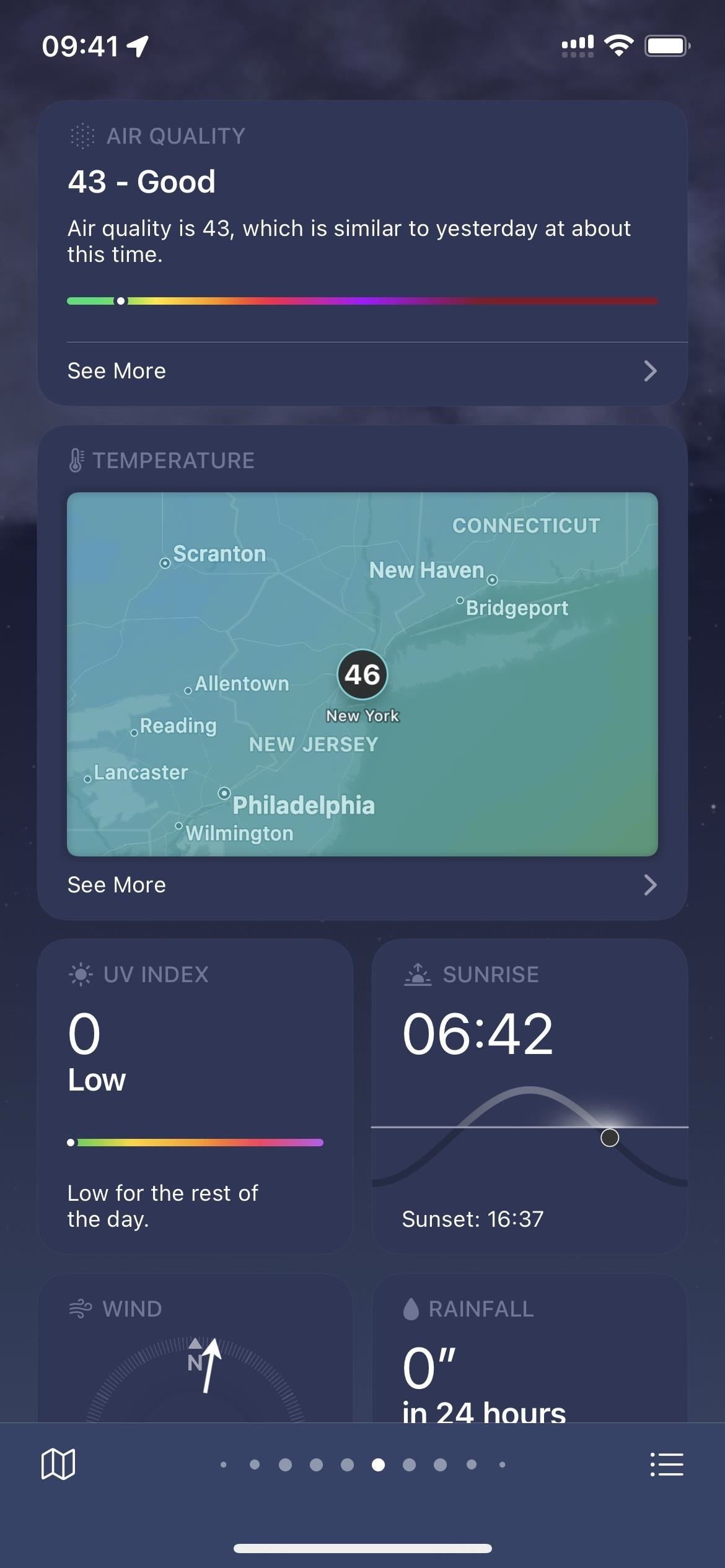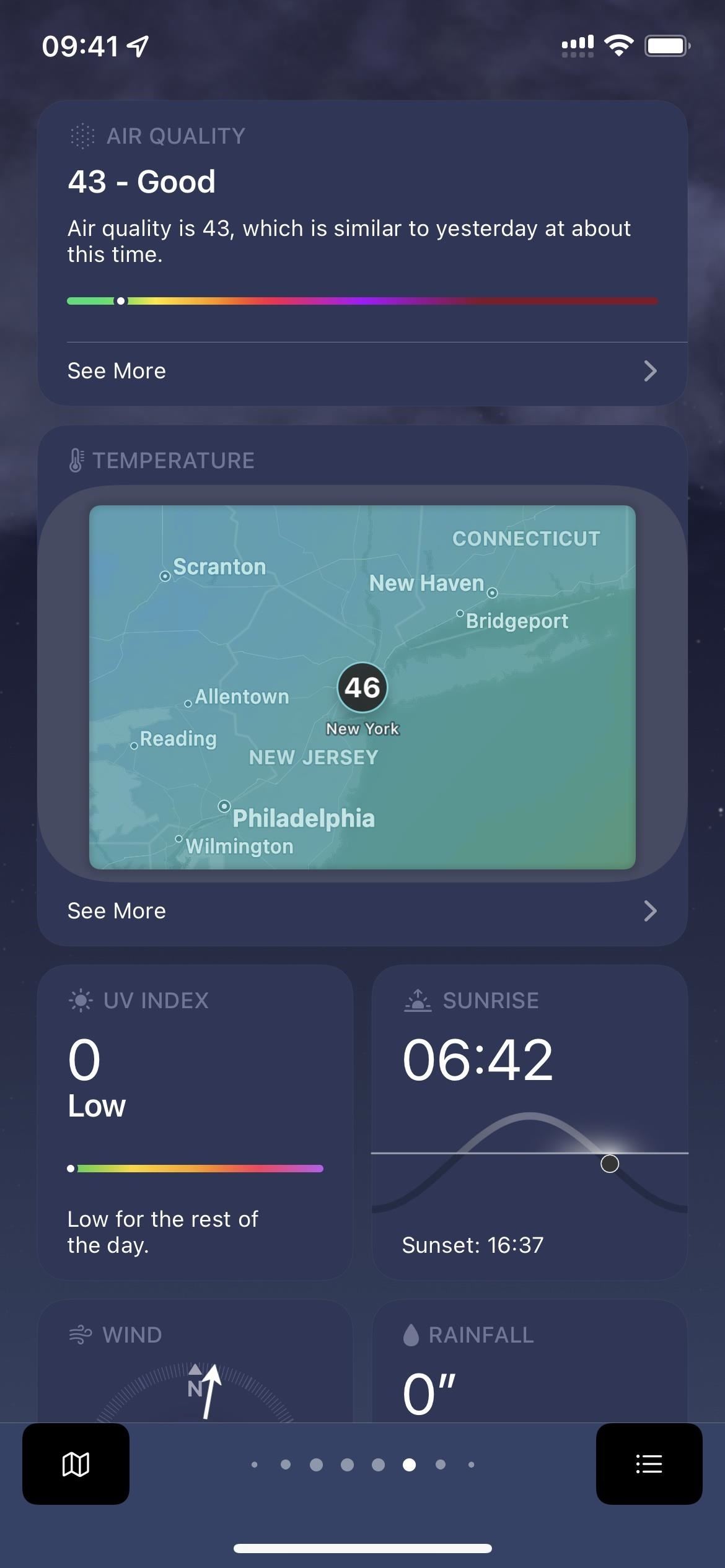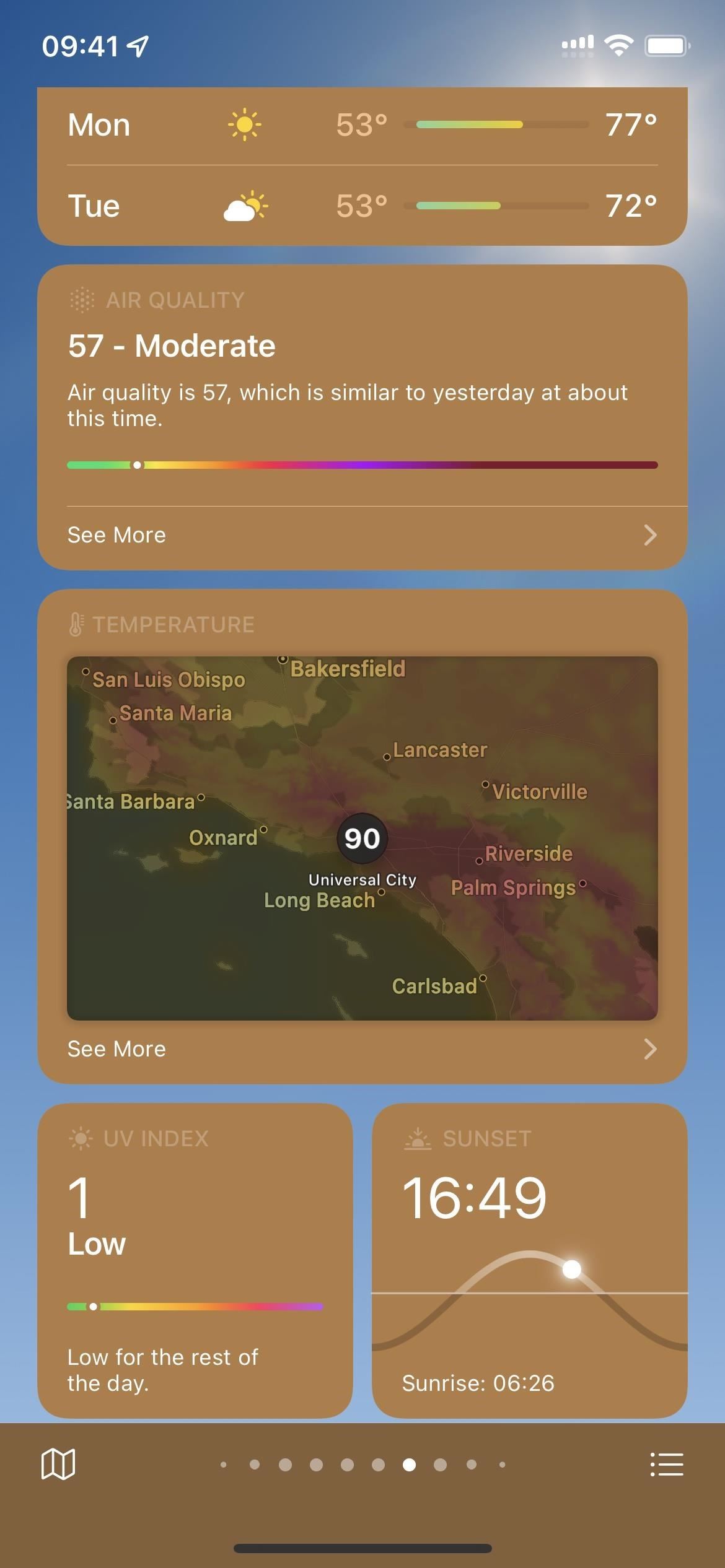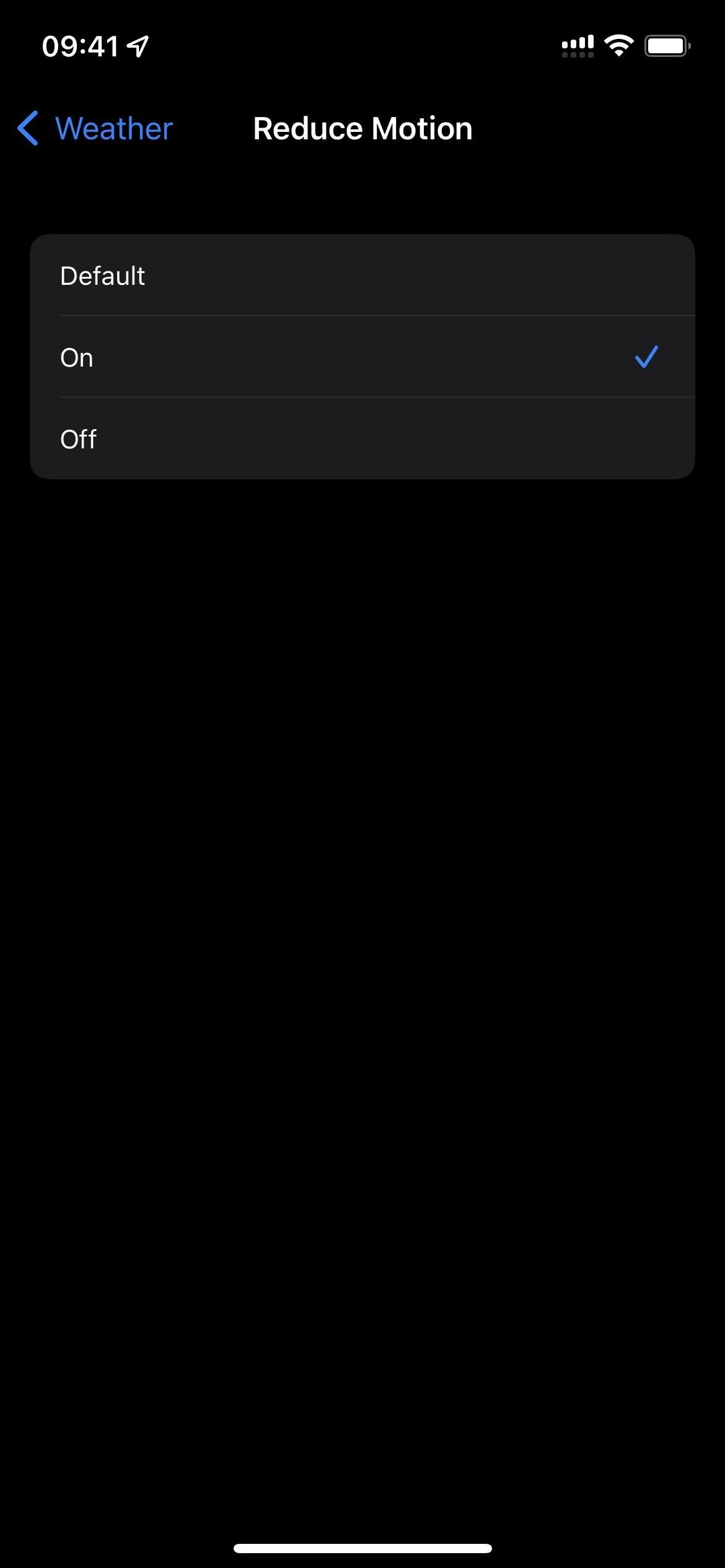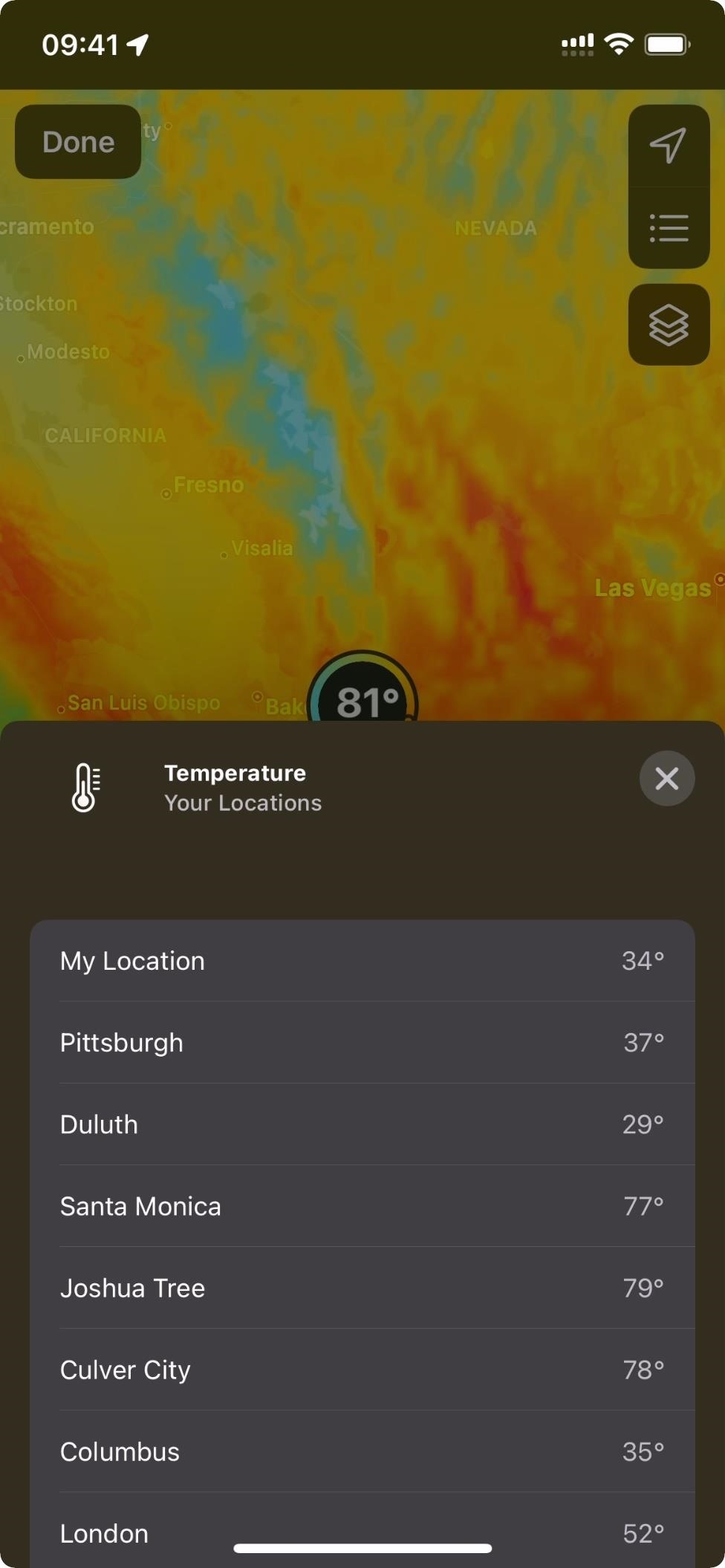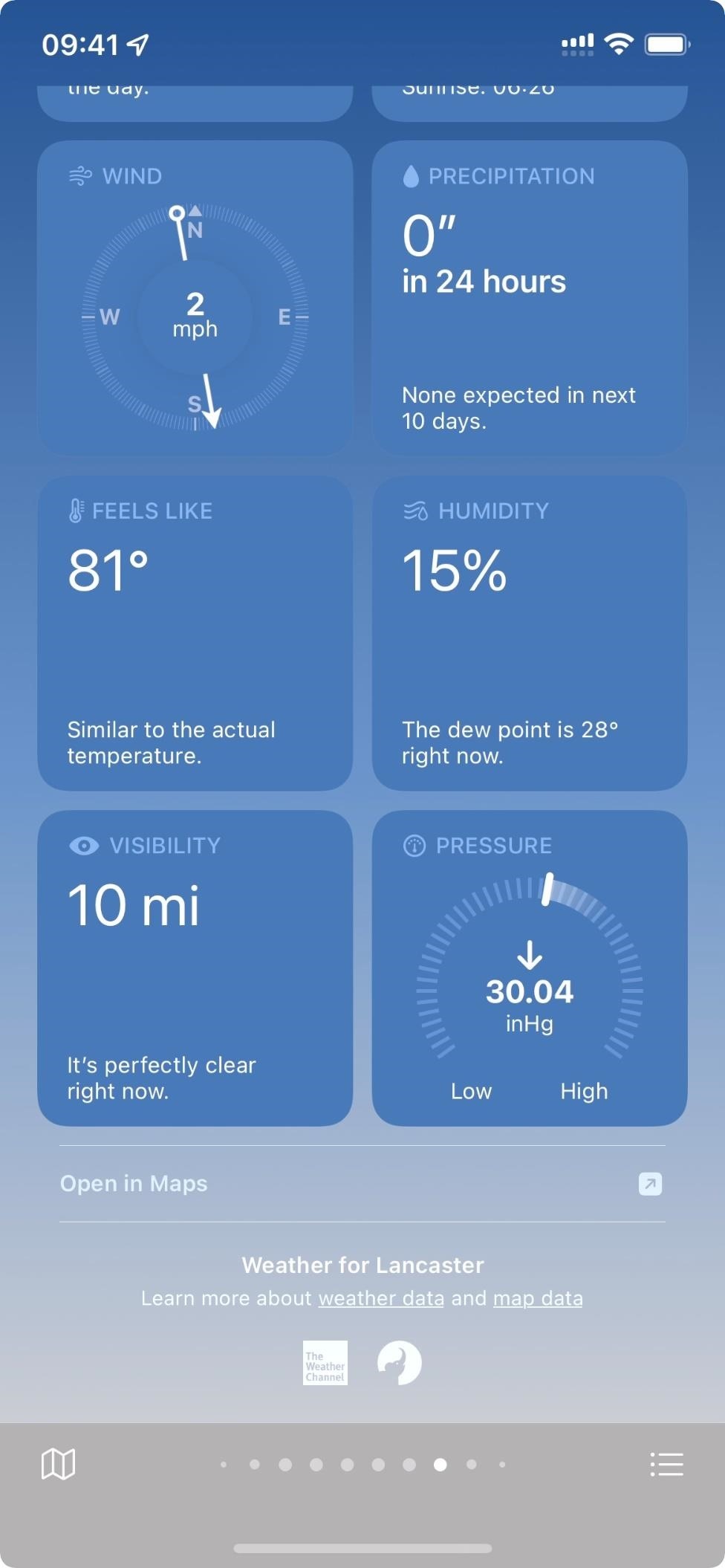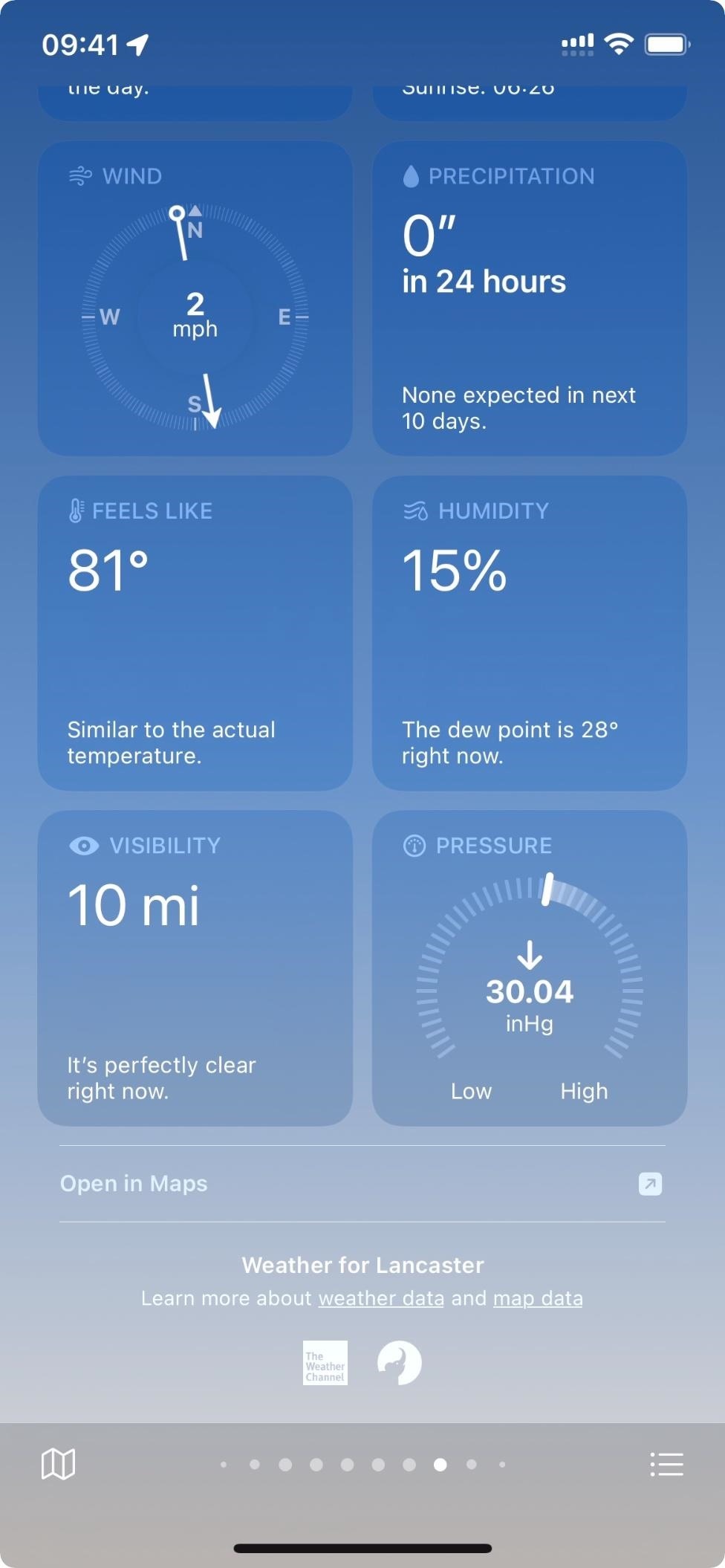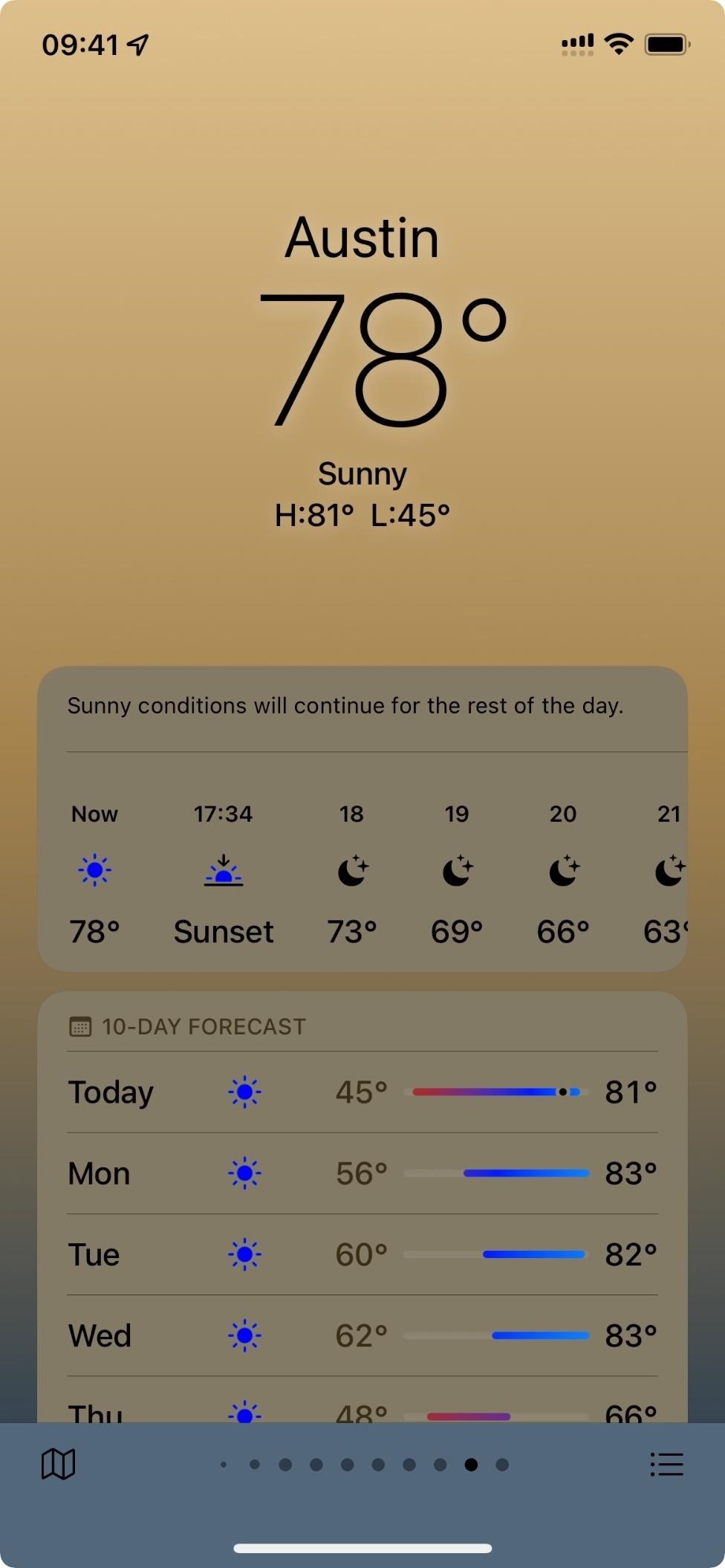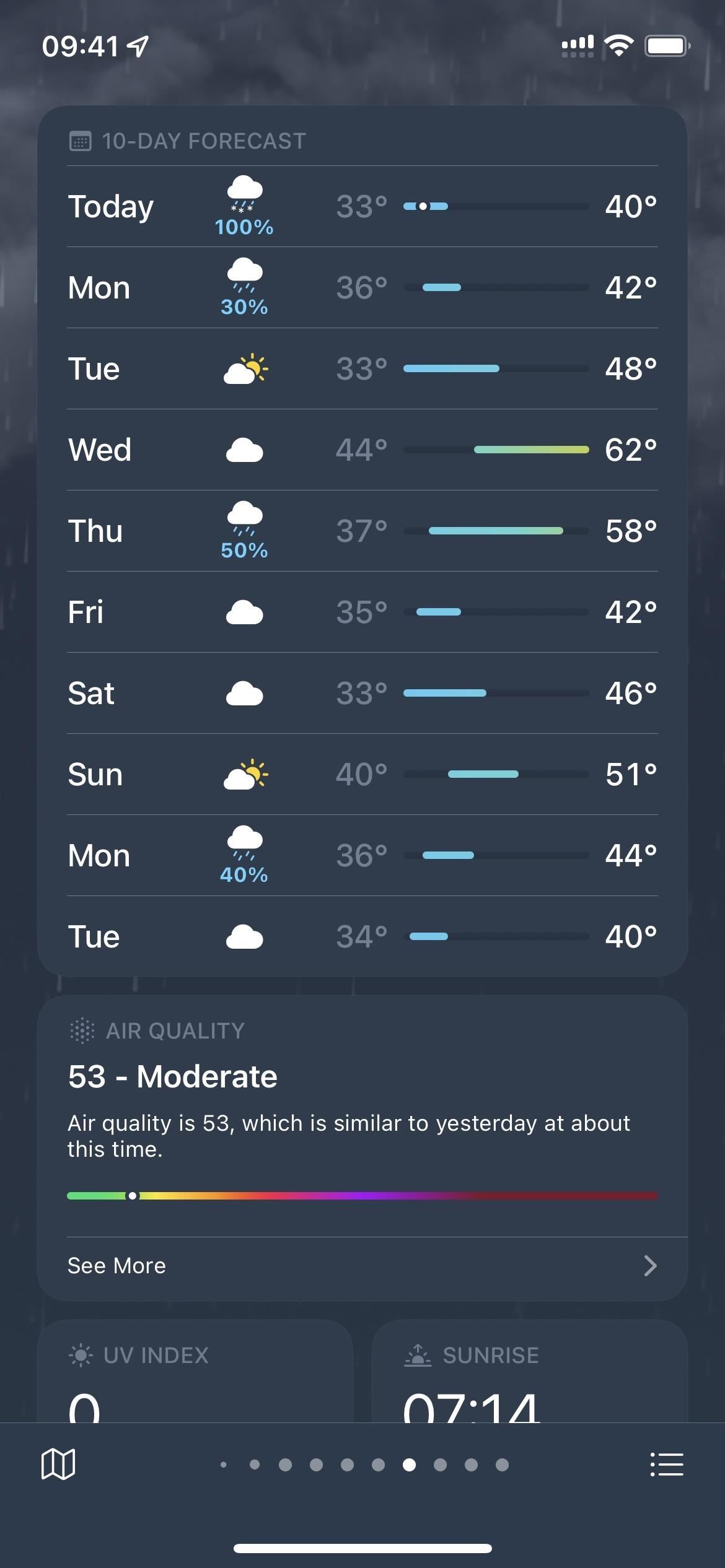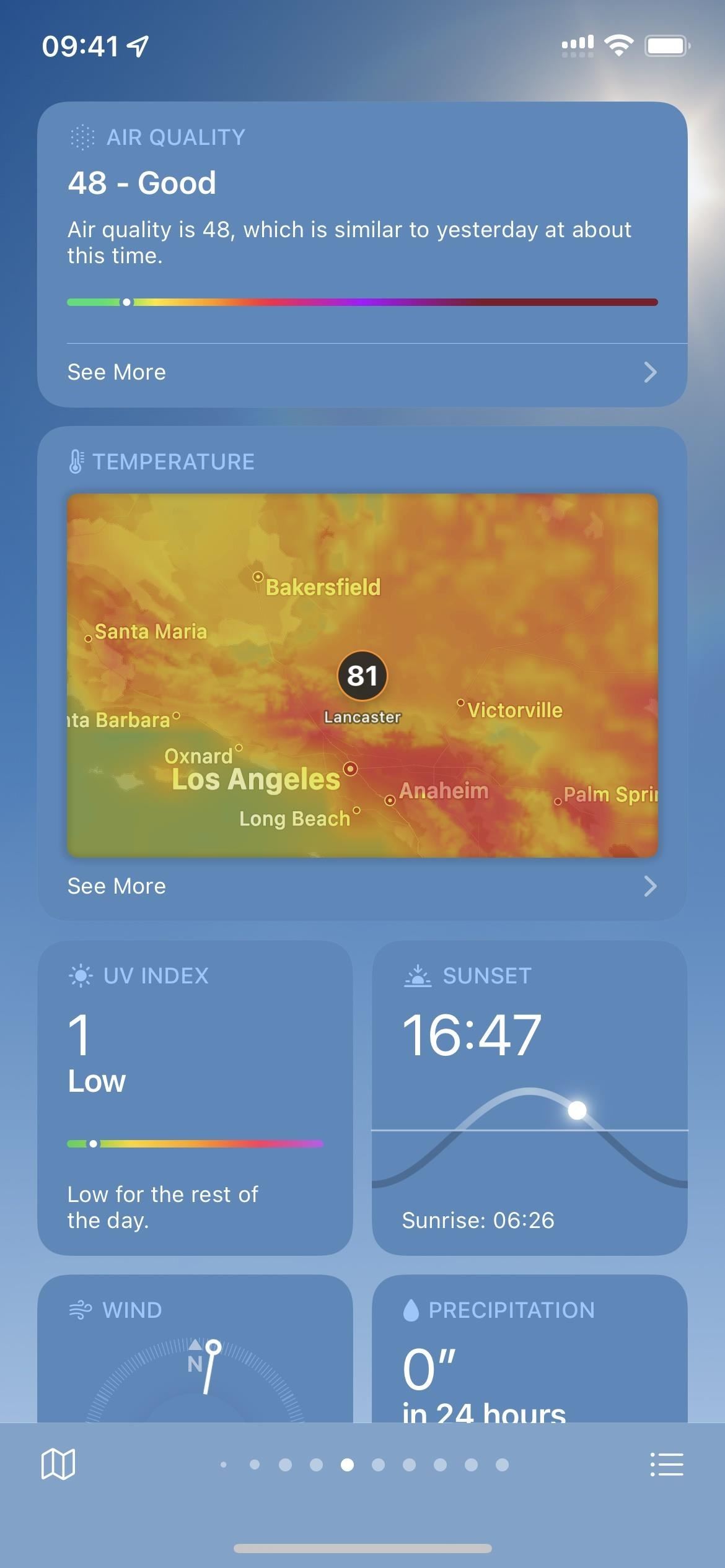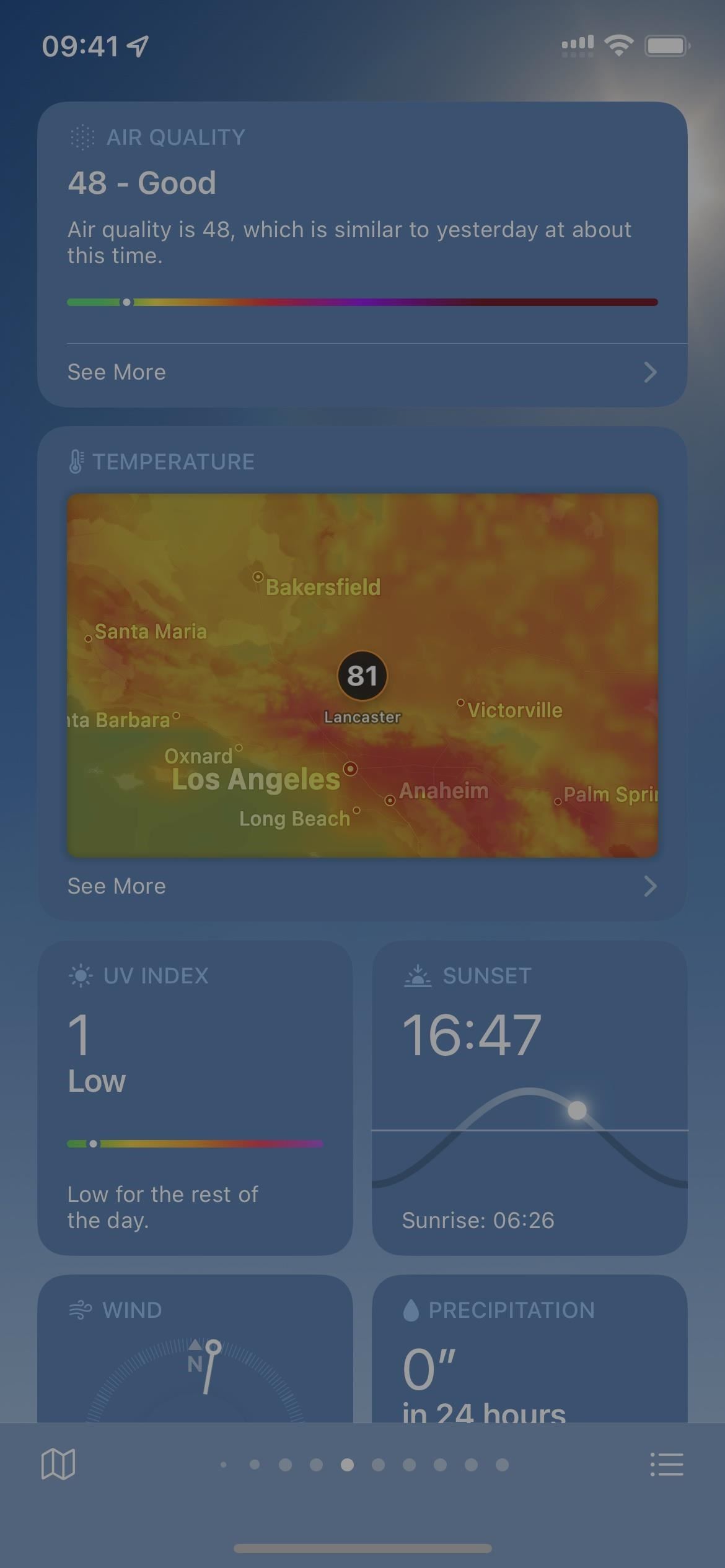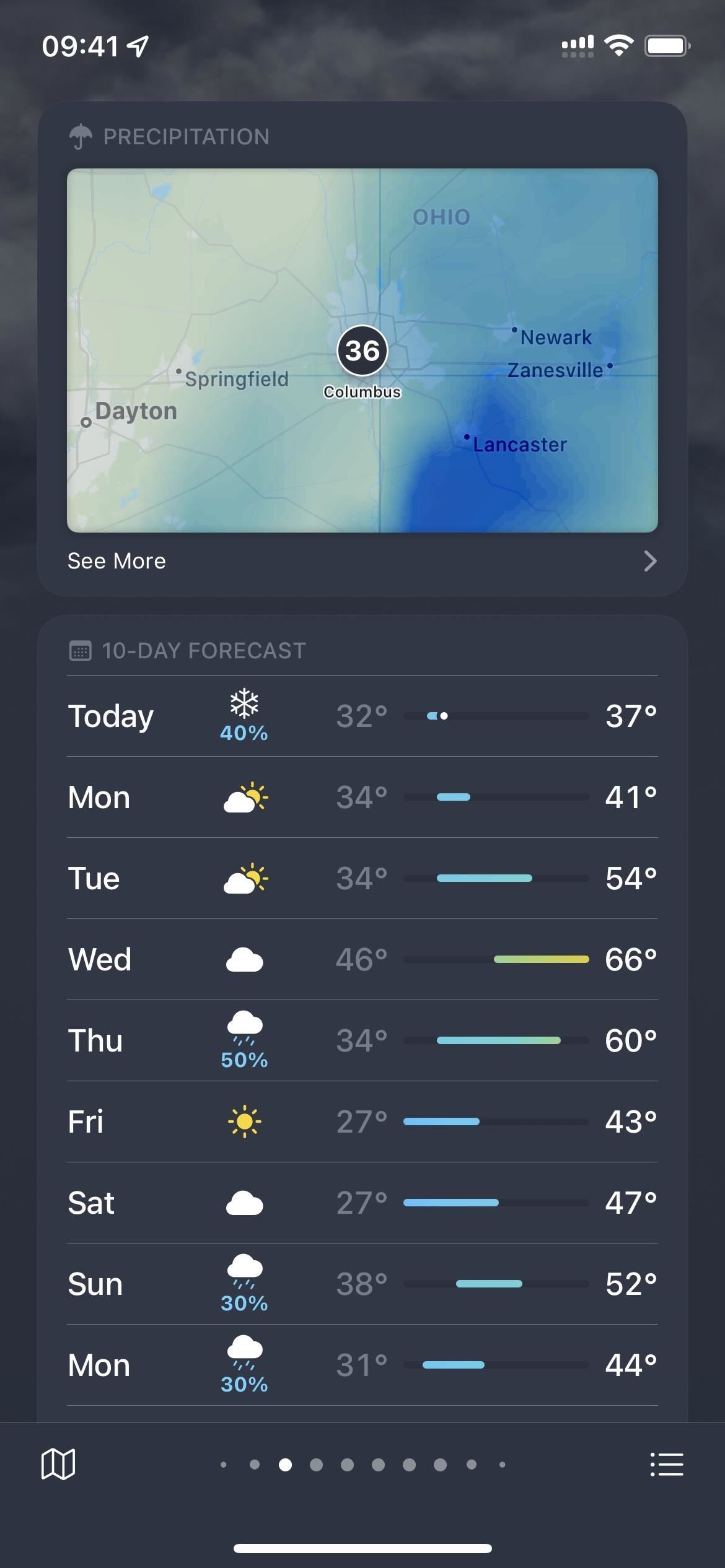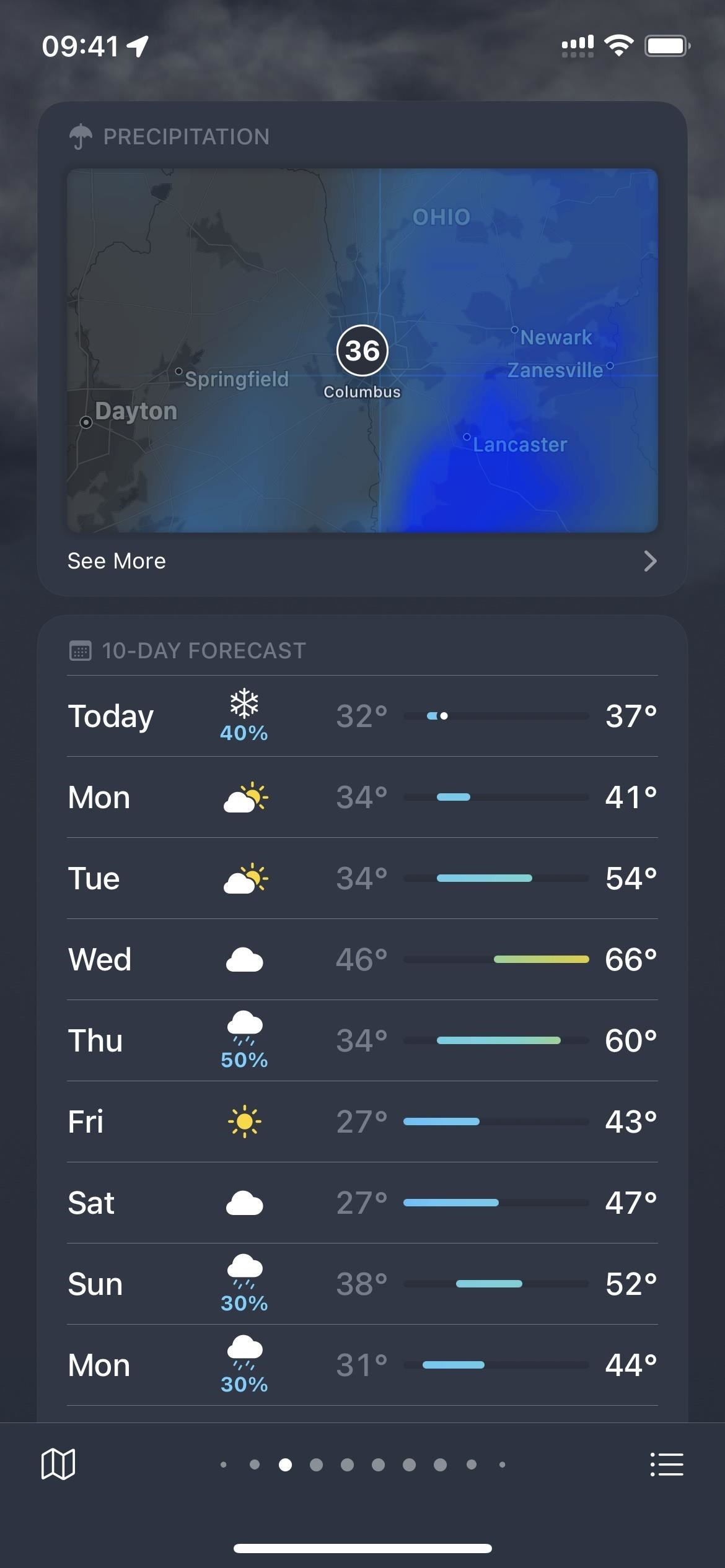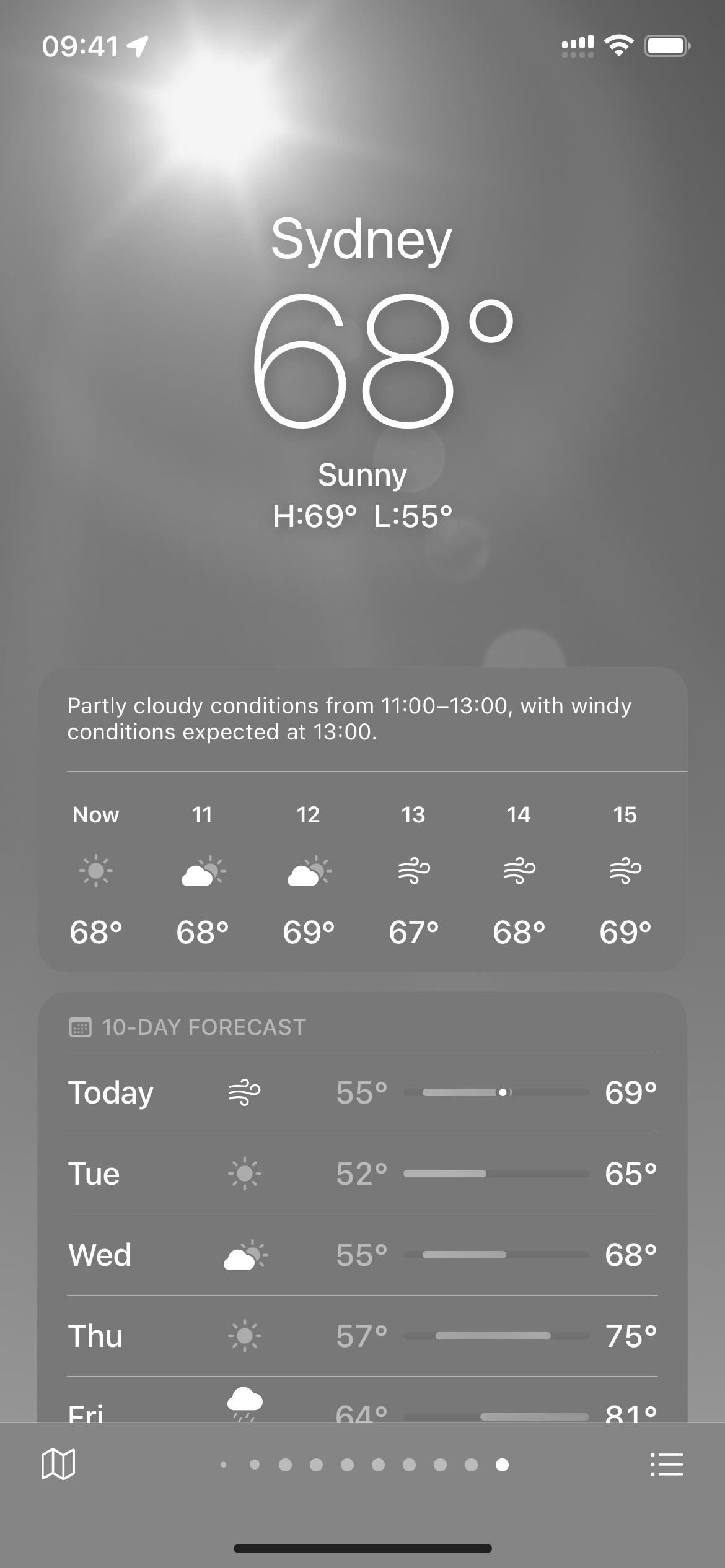The Apple Weather app has been around forever, at least for the iPhone, and has gone through a lot of design changes over the years. But now we’re at the point where we can actually customize the look and feel of the Weather app in a lot of different ways, some of which you’ve probably never even considered.
Add all cities
I’m sure everyone already knows this, but I should mention it – you can add cities to the Weather. The default view is My Location, but you can add up to 19 cities to list or scroll through. To add a city, click the list button in the lower right corner and then use the search bar to find the city you need. Select a city from the results, then click Add.
In the list view, you’ll find a summary of all your cities, and you can select one to expand it if you want to know more. When expanded, you can swipe left or right to move between locations. You can also use the scroll bar at the bottom to navigate cities faster.
If you ever want to delete a city, you can swipe left on it from the list and watch it disappear. You can also quickly swipe left and tap the trash can icon. Alternatively, tap the ellipsis icon (•••), select Edit List, tap the minus sign next to the city, use the trash can button to confirm, and tap Done to return to the list.
Reorder your cities
If you find yourself swiping or scrolling through too many cities to get to the ones you need the most, you can change the order in which they appear. Open the list view, tap a place, then drag it to a new place in the list. Note that My Location cannot be moved.
You can also click the ellipsis (•••) icon, click Edit List, then use the three-line icon next to each city to drag it to a new location in the list.
Choose your preferred temperature unit
Apple automatically sets temperature units based on where you live, so it’s more likely to be Fahrenheit (89ºF, for example) if you’re in the US. However, if you want to use degrees Celsius (eg 32ºC), you can. On the list screen, touch the ellipsis (•••), then select the desired temperature unit. You can also open “Settings”, click “Weather”and change the units from there.
Change the text size
You can change the text size on your iPhone in previous versions of iOS, but as of iOS 15, you can set your preferred weather text size individually. This way the text size won’t affect the rest of the device – just the Weather app.
To quickly change the text size, use the Text Size control in the Control Center. If you don’t see it, go to Settings -> Control Center and add it. Make sure you’re in the Weather app, open Control Center, press the AA button, and select Weather Only. Then adjust your size as needed. You may need to do this several times until you find the optimal location for the Weather.
Alternatively, you can go to Settings -> Accessibility -> Per-App Settings -> Weather. If you don’t see it, click “Add App”and select “Weather”from the list. From here, you can click “Large Text”and adjust the text size as needed.
Choose plain or bold text
In iOS 15, you can also bold only Weather app text. To do this, go to Settings -> Accessibility -> Per-App Settings -> Weather. If you don’t see it, click “Add App”and select “Weather”from the list. From here, you can click on “Bold Text”and turn it on or off, or leave it at the default, which uses your system-wide bold settings.
Use button shapes
You can also add button shapes to the Weather app in iOS 15. Go to Settings -> Accessibility -> App-specific settings -> Weather. If you don’t see it, click “Add App”and select “Weather”from the list. From here, tap “Button Shapes”and turn it on or off, or leave it at the default, which uses your system-wide button shapes preferences.
If it is enabled, the map and list icons will have a button background. In addition, you’ll see a similar background for each city’s precipitation, air quality, and temperature maps, as well as Report a Problem, Manage Notifications, Open in Maps, Weather Channel, and BreezoMeter. buttons at the bottom of each city view. You will also notice several button shapes as you fiddle with the settings.
Activate Smart Invert
Smart Invert intelligently inverts user interface colors by carefully choosing what will be inverted and what will not. In iOS 14, you had to set up accessibility shortcuts, back touch, or shortcuts automation if you wanted Weather to use the Smart Invert feature to change app colors. This is no longer necessary as per-app iOS 15 settings also allow you to set Smart Invert for weather only.
Go to Settings -> Accessibility -> Per App Settings -> Weather. If you don’t see it, click “Add App”and select “Weather”from the list. From here, click “Smart Invert”and turn it on or off, or leave it at the default, which uses the system-wide Smart Invert settings.
You won’t notice much difference in the list view, but the colors of charts, widgets, and maps will appear inverted. The color change is enhanced when dark mode is turned on.
Reduce screen motion
If you don’t like all the animated effects in Weather, you can turn them off without affecting anything else on your iPhone. Like some of the tweaks above, this only works on iOS 15 and later.
Go to Settings -> Accessibility -> Per app settings -> Weather. If you don’t see it, select “Add Application”and select “Weather”from the list. Then click “Reduce Motion”and turn it on or off, or leave it at the default, which uses the system-wide “Reduce Motion”preferences.
Animations for rain, snow, clouds, thunderstorms, clear night, and sunny skies, just to name a few, should now be static in each city’s detailed view. The animation will also stop moving in the list. However, this should not affect the cards.
Increasing screen contrast
Another option in iOS 15 Per-App Settings for weather is Increase Contrast. When enabled, there are slight changes to the Weather menu and text that make it easier to view and read. If you notice changes easily, you might want to use it.
Again, go to Settings -> Accessibility -> Per-App Settings -> Weather. Select “Add App”and select “Weather”from the list if you don’t see it. Then click “Increase Contrast”and turn it on or off, or leave it at the default, which uses the system-wide preference for increasing contrast.
Reduce transparency
Another subtle change you can make to Weather is “reduces transparency and blurs some backgrounds,”as Apple would say. This is especially noticeable in the daylight of the city. Like some of the previous features, this is only for iOS 15 and later.
Visit “Settings”-> “Accessibility”-> “Per-app settings”-> “Weather”. Use “Add Application”to find and add “Weather”if you don’t see it. Then click “Reduce Transparency”and turn it on or off, or leave it at the default, which uses the system-wide “Reduce Transparency”setting.
Enabling classic invert
Apple included quite a few customization options for its “Per-App Settings”in iOS 15, but left out some of the best. While “Smart Invert”is there, “Classic Invert”is nowhere to be seen. The smarter one intelligently inverts only what it sees fit, but the classic version inverts just about everything. In the Weather app, this can be a fun way to view city forecasts.
Since there’s no dedicated setting in Weather for this, you’ll have to rely on enabling “Classic Invert”manually, via the accessibility shortcut or two or three taps on the back of the iPhone. What’s more, you can set up an automation that turns on Classic Inverse when you open the Weather app and turns it off when you exit.
- Full Instructions: How to Change the Color Theme of Any App Interface on Your iPhone – Without Affecting the Rest of iOS
Reduce the white point
As with Classic Invert, you can set up an automation, accessibility shortcut, or backpress with the Reduce White Point feature in iOS. By reducing the white point in the Weather app, you reduce the brightness of the white on the screen and you can make the screen darker overall with the slider.
- Full Instructions: How to Change the Color Theme of Any App Interface on Your iPhone – Without Affecting the Rest of iOS
Use zoom to reduce brightness
If the “Reduce White Point”setting does not bring down the brightness of Weather for you, you can try “Scale”with or instead of it. With “Zoom”you can make the Weather UI brightness lower than what iOS normally allows with normal brightness controls. You can also set up an automation for this, an accessibility shortcut, or a reverse touch.
- Full Instructions: How to Change the Color Theme of Any App Interface on Your iPhone – Without Affecting the Rest of iOS
Assign dark or light mode
Another option that you can automate with shortcuts or assign to an accessibility shortcut or back touch is Dark Mode and Light Mode. As for the weather, you will mostly notice the difference in the menu, but some kinds of maps also adapt to changing darkness or light.
- Full Instructions: How to Change the Color Theme of Any App Interface on Your iPhone – Without Affecting the Rest of iOS
Applying color filters
Apple has an accessibility setting for the iPhone that applies color filters to the screen. It’s useful for people with color vision deficiency, is a great tool for amateur astronomers, and useful when you go to bed trying to fall asleep. It’s also great for just coloring the interface of the Weather app.
Unlike some of the options above, you can’t set up shortcut automation to automatically apply a color filter every time you open Weather and remove it when you close Weather. I was hoping to see this in iOS 15, but it didn’t. Instead, you can use the accessibility shortcut or reverse touch to enable/disable the filter. However, you can use the “Scale”above to apply filters like “Grayscale”, “Inverted Grayscale”and “Low Light”, which is another better option.
You can set the weather to grayscale or use any color of your choice. There are also special filters that help with protanopia, deuteranopia and tritanopia.
- Full Instructions: How to Change the Color Theme of Any App Interface on Your iPhone – Without Affecting the Rest of iOS
Choose a background sound
Apple has added an exciting feature in iOS 15 that lets you turn your iPhone into a personal sound machine. There are six different tracks that can be used as background noise and can help with stress, sleep and distractions.
“Background Sounds”can also be used to set the mood for any application you use. In Shortcuts, Apple’s automation tool, you can assign background sounds to individual apps so that they automatically start playing when the linked app is opened. You can even turn off the sound when you exit the app.
- Full Instructions: These Hacks Make Your iPhone Apps Play Different Background Sounds When You Open Them
